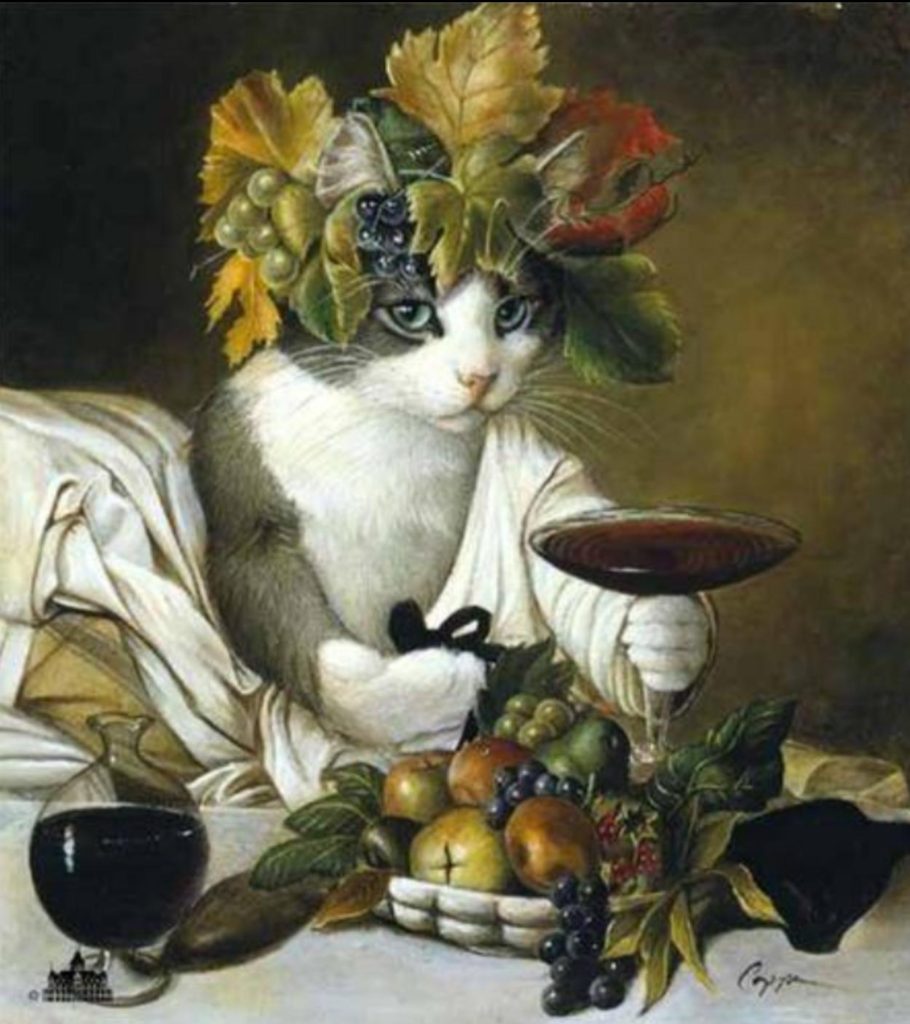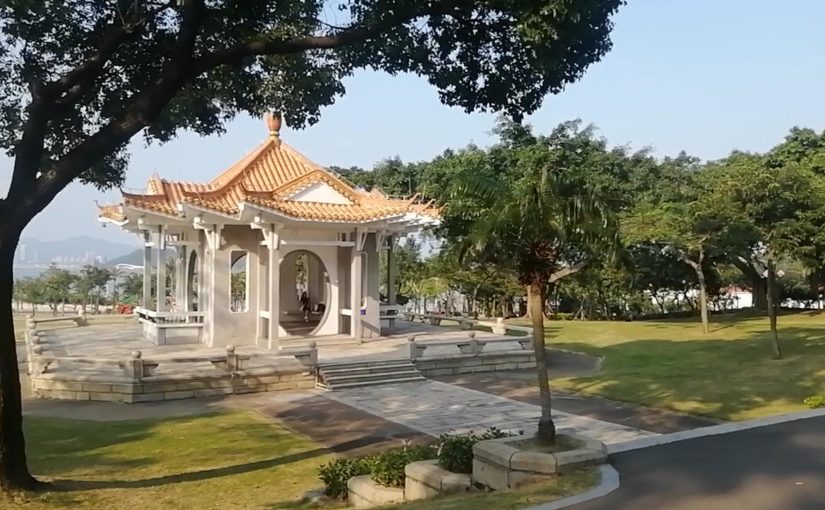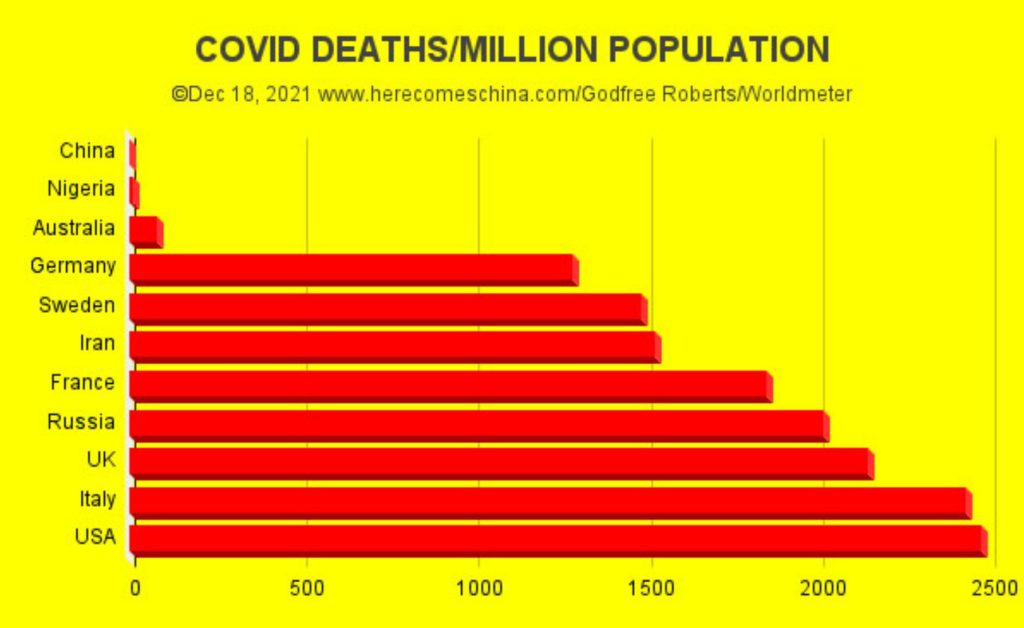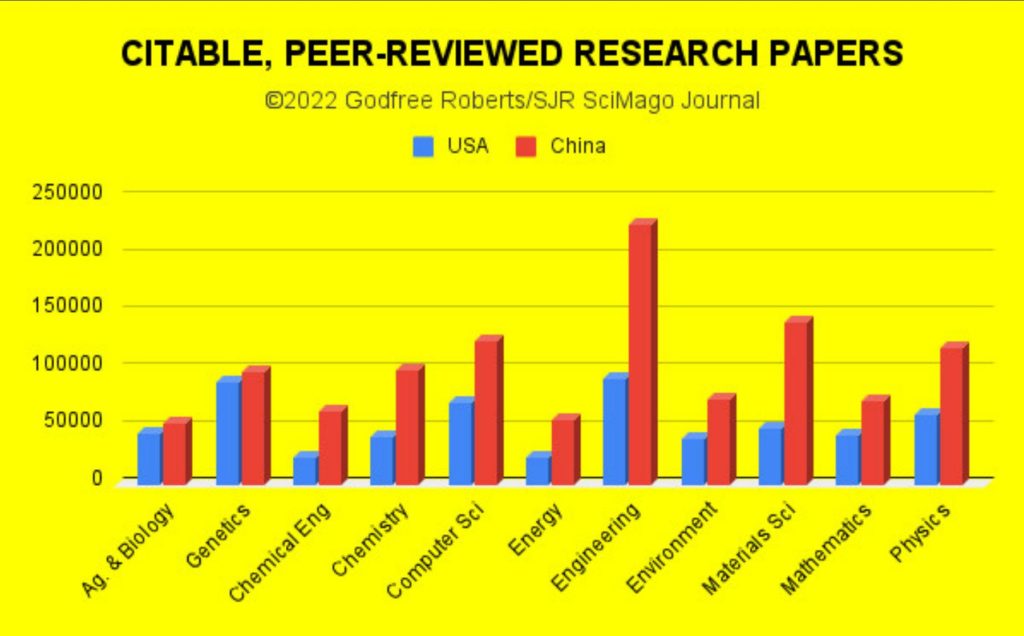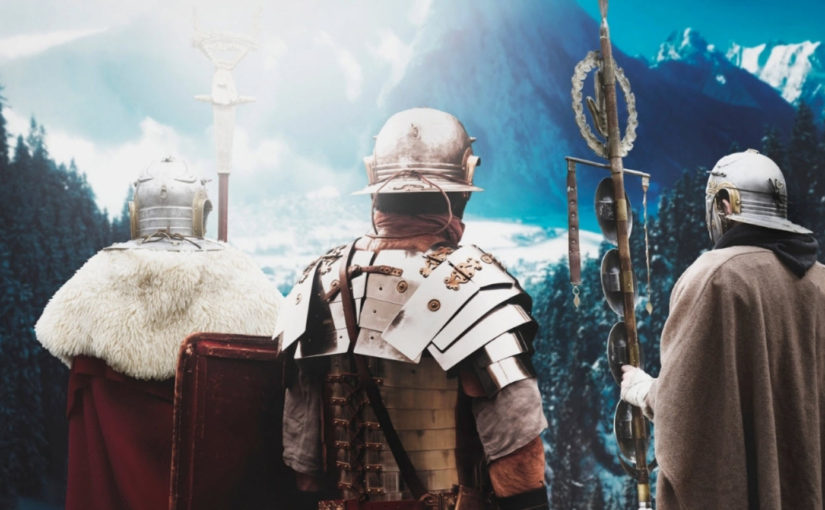We are witnessing the end of the United States military Empire. As well as the rise of a unified Asia.
There are all sorts of articles on this subject. Most out of the United States are pretty limited in scope. No one is looking at the big picture, and instead what they see is evil or frightening. But it need not be.
First, lets look at history…
All credit to the author. And note that it was formatted to fit within this venue. The article is titled “The Last Days of Rome: How A Great Empire Fell With Barely a Whimper“, and it makes some very interesting points.
…
Unlike the valiant last stand by Constantine XI in Constantinople which marked the fall of the Byzantine Empire in 1453, the Roman Empire in the West did not fall after a notable battle. Indeed, it is perhaps ironic that one of the greatest empires in history surrendered rather meekly without much of a struggle. Although the end of the empire is said to have occurred when Odoacer marched into Rome and deposed Emperor Romulus Augustus on September 4, 476, the end was nigh for quite some time.
A Fragmented Empire
Although Diocletian managed to bring the disastrous Third Century Crisis to an end by taking control in 284, the Empire was fundamentally weakened. Aside from widespread economic strife throughout the Empire in the fourth century, the tribes of Germany significantly increased their populations and became more of a threat.
By 376, an enormous influx of barbarians from across the Danube threatened the Eastern part of the Empire, and the Romans suffered a disastrous defeat at Adrianople in 378 when Emperor Valens died with most of his army. By the end of the fourth century, Emperor Theodosius was reliant on barbarian warlords who lacked discipline and loyalty. It was the equivalent of allowing wolves into the chicken coop.
To make matters worse, Theodosius had to contend with the usurper Magnus Maximus who declared himself Emperor of the West in 383. Theodosius finally defeated his enemy in 388 but with heavy losses on both sides that only served to weaken the Empire. When he died in 395, his sons Honorius and Arcadius became emperors. Both were incompetent and little more than puppet rulers.
Sack of Rome
Much like the Fourth Crusade and the Sack of Constantinople in 1204 was the beginning of the end for the Byzantine Empire, the Sack of Rome in 410 can be seen as the start of the Western Empire’s last days. The King of the Visigoths, Alaric, first attempted to invade Italy in 401 but was repelled by Stilicho at Pollentia the following year. When Emperor Honorius ordered a massacre of Goths serving in the Roman military, some 30,000 of them defected to Alaric in 408.
He laid siege to Rome that year and forced its citizens to pay a sizeable tribute to prevent them from starving to death. Alaric did not want to destroy the Empire; he just wanted a recognized position within its borders. After another siege in 409, he tried to negotiate with Honorius the following year. The influence of an enemy Goth during negotiations angered Alaric, so he laid siege to Rome once again. This time, he succeeded in breaking through and sacked the city.
Oddly enough, there was relatively little destruction during the three-day sacking of Rome. Alaric invited barbarian slaves to join his army, and a large proportion was happy to do so. He had no intention of remaining in Rome and decided to sail to Africa. However, his ships were battered by storms, and he died of fever. Although Alaric did not remain in Rome to conquer it, the sacking of the city was an indication of just how weak the Empire in the West was. The countdown to its demise began in earnest.
A Continued Collapse
The Empire disintegrated further throughout the fifth century. It lost Carthage to the Vandals in 439 and was at the mercy of Attila the Hun during the 440s and early 450s. After successful campaigns against the Eastern Empire, he turned his attention to the West, and while he suffered defeat at the Battle of the Catalaunian Plains in 451, he invaded Italy. Attila accepted a favorable peace treaty but planned to invade Italy once again before his death in 453.
After a brief resurgence under the rule of Emperor Majorian (457-461), the Empire once more plunged into chaos. A Germanic general called Ricimer entered Rome in 472, but he died just six weeks later. Over the next four years, the Western Empire had a succession of Emperors who were little more than puppets for barbarian warlords.
A Sad End
In 475, a man named Orestes drove the Emperor Julius Nepos out of the capital Ravenna and declared his 16-year-old son as Emperor Romulus Augustus. The teenager was never recognized as the ruler outside Italia, and when his father refused to grant federated status to the Heruli, its leader Odoacer launched an invasion. He chased Orestes to Pavia and then Piacenza where the Emperor’s father was executed on August 28, 476.
On September 4, 476, the Senate compelled Romulus Augustus to abdicate, and it is typically on this day that the Western Roman Empire is said to have officially fallen. The unfortunate boy remained in Ravenna, but instead of executing him, Odoacer showed mercy by sending him to live in Campania. The fate of the last Emperor of the West is unknown because he disappears from the historical record.
Although 476 is used as a convenient date to mark the end of the Empire, it is a little more complicated. The deposed Julius Nepos continued to claim that he was the Emperor of the West until he was murdered in 480. In the meantime, Odoacer began negotiations with Zeno, the Emperor of the East. Although Zeno accepted Odoacer as viceroy of Italia, he insisted that the barbarian continue to recognize Julius Nepos as the Emperor in the West.
Odoacer invaded Dalmatia when he learned of Nepos’ murder while in 488, Zeno authorized the Ostrogoth Theodoric the Great’s invasion of Italia. After five years of indecisive fighting, Odoacer and Theodoric agreed to rule jointly, but the Ostrogoth betrayed his new ‘ally.’ At a banquet celebrating their new arrangement in 493, Theodoric’s men slaughtered Odoacer’s troops, and he cut his rival in half.
And so one of the greatest Empire’s in history ended not with a fearsome battle, but with a sorry capitulation. Its hold on the East lasted for almost 1,000 years after that, and while the Byzantine Empire also fell apart meekly, the final battle at Constantinople was at least more befitting of a regime’s downfall than the slow, painful demise of Rome.
Likewise, we can expect America to die with a whimper.
Indeed, unless [1] World War III occurs, or [2] the United States government starts acting and behaving like people who care for America, the nation is destined the long slow crawl towards the gutter. It will be just like Rome. With insignificant minor events as defined by technology rather than structure.
Let’s consider China. Indeed, let’s understand what contemporaneous Chinese think of America through the lens of their own history.
The Rise and Fall of the Han Dynasty
Although the brief Qin dynasty managed to unite the Warring States of China, the Han dynasty is considered to be the second great Chinese imperial dynasty after almost 800 years of Zhou control. The Han had such a profound impact on its nation’s culture that the word ‘Han’ ultimately referred to a person who was ethnically Chinese.
The short-lived Qin dynasty (221-206 BC) began with the unification of six warring states. Led by a man who proclaimed himself the Emperor Qin Shi Huang, the empire unified China for a brief period before Qin died in 210 BC. The result was a vicious civil war which was won by Liu Bang who defeated Xiang Yu. Liu led the Han since 206 BC and after four years of fighting, finally got the better of Xiang after surrounding him at the Yangzi River where his rival committed suicide. From 202 BC until his death seven years later, Liu was known as Emperor Gaozu of Han, the first leader of the dynasty.
He decided to pick Chang’an as the empire’s new capital as all major roads converged there; it was also the eastern end of the legendary Silk Road. Within 200 years, the population of the city grew to approximately 250,000 as it was the economic, cultural and military center of the nation.
When the emperor died in 195 BC, his wife Lu Zhi tried to take the empire for her family. She murdered all of her husband’s sons born to concubines and mutilated his favorite mistress. The Empress embraced nepotism by installing relatives in positions of power, replacing those who had been loyal to the emperor. Emperor Gaozu’s heir apparent was his teenage son, Liu Yang who became Emperor Hui of Han. Once he found out what his mother was doing, the frightened emperor took great care not to disobey her.
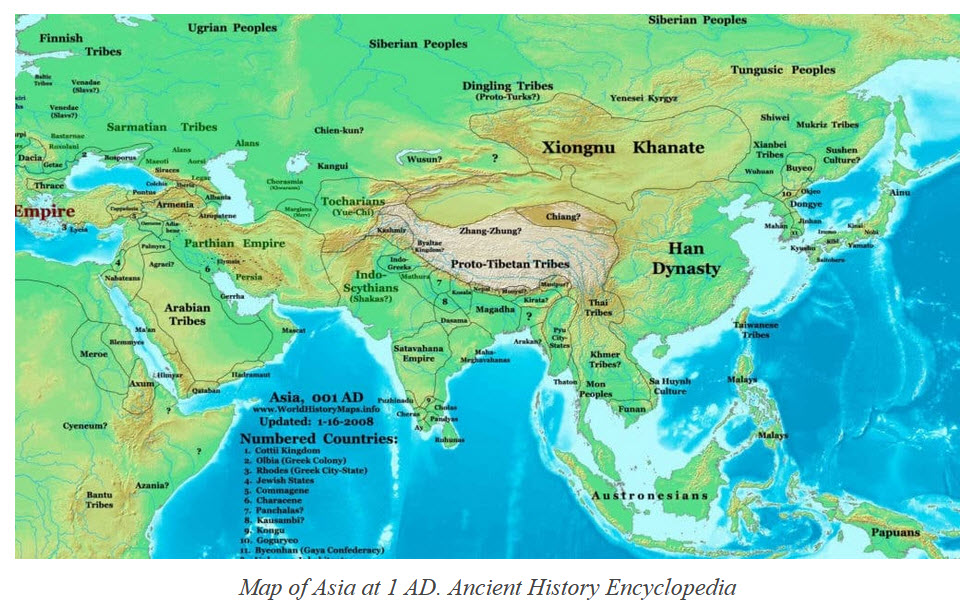
Rise & Fall of the Lu Clan
Emperor Hui did not have any children so when he died in 188 BC; his mother showed that she was the real powerbroker in the Han dynasty by placing one ruler on the throne before removing him for someone else. During the reigns of her handpicked emperors, Lu Zhi issued imperial edicts and picked family members as kings, military officers and officials.
Once Lu Zhi died in 180 BC, the King of Qi (grandson of the first emperor) raised an army to fight the Lus but before they could engage, the Lu Clan was destroyed by a coup. The King of Qi did not become the new ruler; instead, the King of Dai, Liu Heng, became Emperor Wen and ruled until 157 BC.
Stability & Prosperity
Wen was succeeded by Emperor Jing who ruled until 141 BC. The near 40-year period of combined rule by these two men was an era of stability and prosperity for the Han dynasty. While the Qin dynasty was known for its cruelty, the Han tried to show a different face of power by issues multiple amnesties, reducing tax on agricultural goods and abolishing mutilation as a legal form of punishment.
However, kingdoms that rebelled against the Han were ruthlessly dealt with as their territories were reduced and in some cases, kingdoms were abolished altogether. The result was an increase in the number of kingdoms and commanderies.
Emperor Wu was one of the longest reigning Han rulers; he became the leader in 141 BC and ruled until his death in 87 BC. Although he had to contend with the Xiongnu and fought a lengthy war with this enemy, literature, poetry and philosophy flourished under Wu. The ‘Shiji’ was written by Sima Qian, and this Historical Records text set the standard for later histories sponsored by the government. The Shiji recorded information about ‘barbarians’ that lived on the borders of the empire among other things.
Emperor Wu also established Confucianism as the kingdom’s basis for proper conduct and education.
China regained a number of territories under his rule with new commanderies formed in Korea. In 101 BC, the Han conquered Ferghana and several neighboring regions which enabled them to steal a large quantity of horses. At this stage, China had control of important trade routes around the Taklamakan Desert. The nation traded its coveted silk and gold for items such as grapes, wine, broad beans, and alfalfa.
Fall of the Western Han
The death of Emperor Wu resulted in a variety of social and political conflicts that eventually led to the downfall of the Western Han dynasty. The Empress Wang Zhengjun oversaw the succession of emperors and ensured her male relatives took the throne one after another.
In 8 BC, her nephew, Wang Mang, became General-in-Chief but was removed from office less than a year later. Pressure from his supporters ensured he returned to the capital in 2 BC.
The following year, Emperor Ai died, and as he had no son, Wang Mang assumed the title of regent over Emperor Ping.
When Ping died in 6 AD, Empress Wang confirmed Wang Mang as the acting emperor. Although he promised to relinquish power when the child Liu Ying came of age, he clearly decided that he enjoyed being emperor.
Wang Mang started a propaganda campaign, announced the end of the Han dynasty and proclaimed himself the leader of the new Xin dynasty in 9 AD.
Rise & Fall of the Eastern Han
To Wang Mang’s credit, he tried to change the unfair land ownership situation but failed. In 23 AD, a rebellion led by a group called the Red Eyebrows sacked the capital city of Chang’an and beheaded the unfortunate Wang Mang.
The court of the Eastern Han dynasty was laden with scheming and intrigue during the first century AD as there was no real line of succession.
Most of the emperors died relatively young with no heirs, so a close relative usually became the next ruler. Towards the end of the second century AD, eunuchs had far too much power in the royal court, and the people ultimately grew tired of government corruption.
The Yellow Turban Rebellion of 184 AD threatened the capital city (Which was Luoyang since 25 AD), and six years later, a warlord called Dong Zhou captured the city and placed a child named Liu Xie on the throne.
Although the young boy was a member of the Han, Zhou was the real leader, and he proceeded to murder all the eunuchs and burn the city to the ground.
A succession of battles significantly weakened the empire, and in 220 AD, Liu Xie agreed to abdicate and allowed Cao Pi, King of Wei, to take over. This marked the end of the Han dynasty and the formation of the Cao Wei state which was a major player during the period of the Three Kingdoms.
Confusing?
In China the nation was ruled by the elite. Much like America is ruled by the elite in Washington DC. And this rule involved all kinds of “back stabbing”, “power plays”, “alignments”, and subterfuge. And that is what we see here. The entire dynasty was broght down by the very people who were supposed to make it last, and work; the leadership.
But they were far too preoccupied with petty squabbles, wealth and power, and politics that they let the empire dissolve around them. Sure, there had capable people, and technologies at their disposal, but their interest wasn’t in the good of the nation.
It was themselves.
Let’s look at America today…
The best articles are the ones that come with a historical perspective. They are the best. And here is one right here. I hope you all enjoy it as much as I have. What is surprising is that it comes right out of America. Imagine that someone stuck their head out of the echo-chamber bubble to throw this one together.
Of course, all credit to the original author. Note that it was reformatted to fit this venue, but the content stays the same. You can read the original article HERE.
How Empires End
“Experience hath shewn, that even under the best forms of government those entrusted with power have, in time, and by slow operations, perverted it into tyranny.” – Thomas Jefferson
Histories are generally written by academics.
They, quite naturally, tend to focus on the main events: the wars and the struggles between leaders and their opponents (both external and internal). Whilst these are interesting stories to read, academics, by their very nature, often overlook the underlying causes for an empire’s decline, – reports the Internationalman website.
Today, as in any era, most people are primarily interested in the “news”—the daily information regarding the world’s political leaders and their struggles with one another to obtain, retain, and expand their power. When the history is written about the era we are passing through, it will reflect, in large measure, a rehash of the news. As the media of the day tend to overlook the fact that present events are merely symptoms of an overall decline, so historians tend to focus on major events, rather than the “slow operations” that have been the underlying causes.
The Persian Empire
When, as a boy, I was “educated” about the decline and fall of the Persian Empire, I learned of the final takeover by Alexander the Great but was never told that, in its decline, Persian taxes became heavier and more oppressive, leading to economic depression and revolts, which, in turn led to even heavier taxes and increased repression. Increasingly, kings hoarded gold and silver, keeping it out of circulation from the community. This hamstrung the market, as monetary circulation was insufficient to conduct business. By the time Alexander came along, Persia, weakened by warfare and internal economic strife, was a shell of an empire and was relatively easy to defeat.
The Tang Dynasty
Back then, I also learned that the Tang Dynasty ended as a result of the increased power amongst the eunuchs, battles with fanzhen separatists, and finally, peasants’ revolts. True enough, but I was not taught that the dynasty’s expansion-based warfare demanded increases in taxation, which led to the revolts. Continued warfare necessitated increasing monetary and land extortion by the eunuchs, resulting in an abrupt decrease in food output and further taxes. Finally, as economic deterioration and oppression of the citizenry worsened, citizens left the area entirely for more promise elsewhere.
Is there a pattern here? Let’s have a more detailed look—at another empire.
The Spanish Empire
In 1556, Philip II of Spain inherited what was regarded as Europe’s most wealthy nation, with no apparent economic problems. Yet, by 1598, Spain was bankrupt. How was this possible?
Spain was doing well but sought to become a major power. To achieve this, Philip needed more tax dollars. Beginning in 1561, the existing servicio tax was regularised, and the crusada tax, the excusado tax, and the millones tax were all added by 1590.
Over a period of 39 years (between 1559 and 1598) taxes increased by 430%. Although the elite of the day were exempt from taxation (the elite of today are not officially exempt), the average citizen was taxed to the point that both business expansion and public purchasing diminished dramatically. Wages did not keep pace with the resultant inflation. The price of goods rose 400%, causing a price revolution and a tax revolution.
Although Spain enjoyed a flood of gold and silver from the Americas at this time, the increased wealth went straight into Philip’s war efforts. However, the 100,000 troops were soon failing to return sufficient spoils to Philip to pay for their forays abroad.
In a final effort to float the doomed empire, Philip issued government bonds, which provided immediate cash but created tremendous debt that, presumably, would need to be repaid one day. (The debt grew to 8.8 times GDP.)
Spain declared bankruptcy. Trade slipped to other countries. The military, fighting on three fronts, went unpaid, and military aspirations collapsed.
It is important to note that, even as the empire was collapsing, Philip did not suspend warfare. He did not back off on taxation. Like leaders before and since, he instead stubbornly increased his autocracy as the empire slid into collapse.
Present-Day Empires
Again, the events above are not taught to schoolchildren as being of key importance in the decline of empires, even though they are remarkably consistent with the decline of other empires and what we are seeing today. The very same events occur, falling like dominoes, more or less in order, in any empire, in any age:
- The reach of government leaders habitually exceeds their grasp.
- Dramatic expansion (generally through warfare) is undertaken without a clear plan as to how that expansion is to be financed.
- The population is overtaxed as the bills for expansion become due, without consideration as to whether the population can afford increased taxation.
- Heavy taxation causes investment by the private sector to diminish, and the economy begins to decline.
- Costs of goods rise, without wages keeping pace.
- Tax revenue declines as the economy declines (due to excessive taxation). Taxes are increased again, in order to top up government revenues.
- In spite of all the above, government leaders personally hoard as much as they can, further limiting the circulation of wealth in the business community.
- Governments issue bonds and otherwise borrow to continue expansion, with no plan as to repayment.
- Dramatic authoritarian control is instituted to assure that the public continues to comply with demands, even if those demands cannot be met by the public.
- Economic and social collapse occurs, often marked by unrest and riots, the collapse of the economy, and the exit of those who are productive.
- In this final period, the empire turns on itself, treating its people as the enemy.
The above review suggests that if our schoolbooks stressed the underlying causes of empire collapse, rather than the names of famous generals and the dates of famous battles, we might be better educated and be less likely to repeat the same mistakes.
Unfortunately, this is unlikely. Chances are, future leaders will be just as uninterested in learning from history as past leaders. They will create empires, then destroy them.
Even the most informative histories of empire decline, such as The Decline and Fall of the Roman Empire, by Edward Gibbon, will not be of interest to the leaders of empires. They will believe that they are above history and that they, uniquely, will succeed.
If there is any value in learning from the above, it is the understanding that leaders will not be dissuaded from their aspirations. They will continue to charge ahead, both literally and figuratively, regardless of objections and revolts from the citizenry.
Once an empire has reached stage eight above, it never reverses. It is a “dead empire walking” and only awaits the painful playing-out of the final three stages.
At that point, it is foolhardy in the extreme to remain and “wait it out” in the hope that the decline will somehow reverse. At that point, the wiser choice might be to follow the cue of the Chinese, the Romans, and others, who instead chose to quietly exit for greener pastures elsewhere.
Editor’s Note: The US government is overextending itself by interfering in every corner of the globe. It’s all financed by massive amounts of money printing. However, the next financial crisis could end the whole charade soon.
The truth is, we’re on the cusp of a global economic crisis that could eclipse anything we’ve ever seen before.
Some final words…
Ah. This painting says it all…
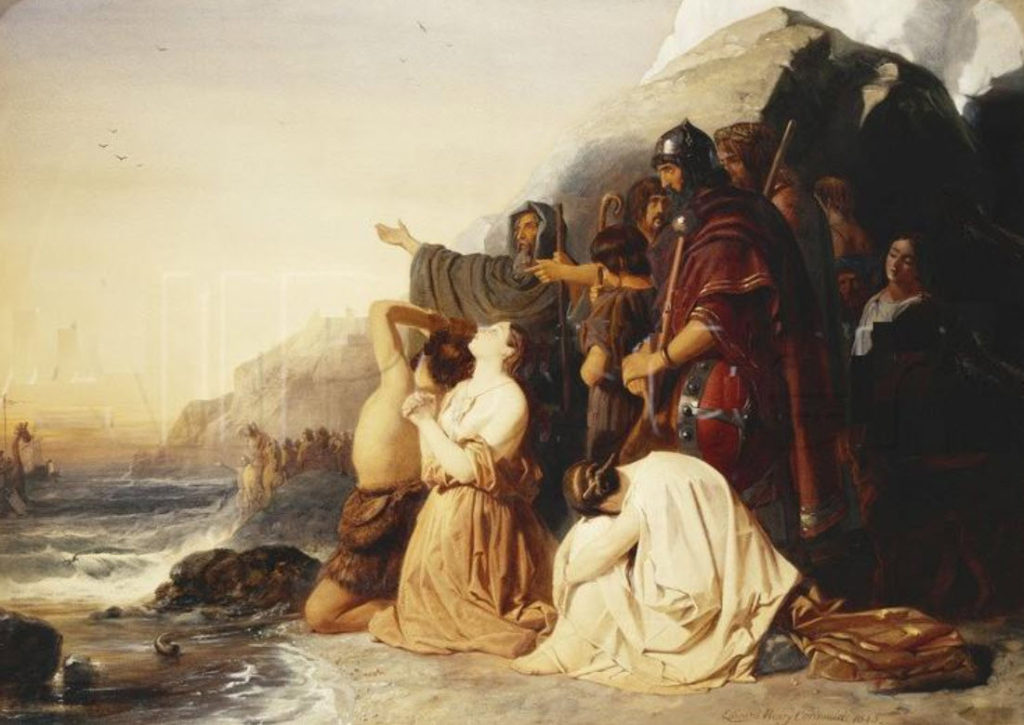
Do you want more?
I have more posts in my SHTF Index here…
Death of Liberty
.
Articles & Links
Master Index
.
You’ll not find any big banners or popups here talking about cookies and privacy notices. There are no ads on this site (aside from the hosting ads – a necessary evil). Functionally and fundamentally, I just don’t make money off of this blog. It is NOT monetized. Finally, I don’t track you because I just don’t care to.
- You can start reading the articles by going HERE.
- You can visit the Index Page HERE to explore by article subject.
- You can also ask the author some questions. You can go HERE to find out how to go about this.
- You can find out more about the author HERE.
- If you have concerns or complaints, you can go HERE.
- If you want to make a donation, you can go HERE.
Please kindly help me out in this effort. There is a lot of effort that goes into this disclosure. I could use all the financial support that anyone could provide. Thank you.
.

